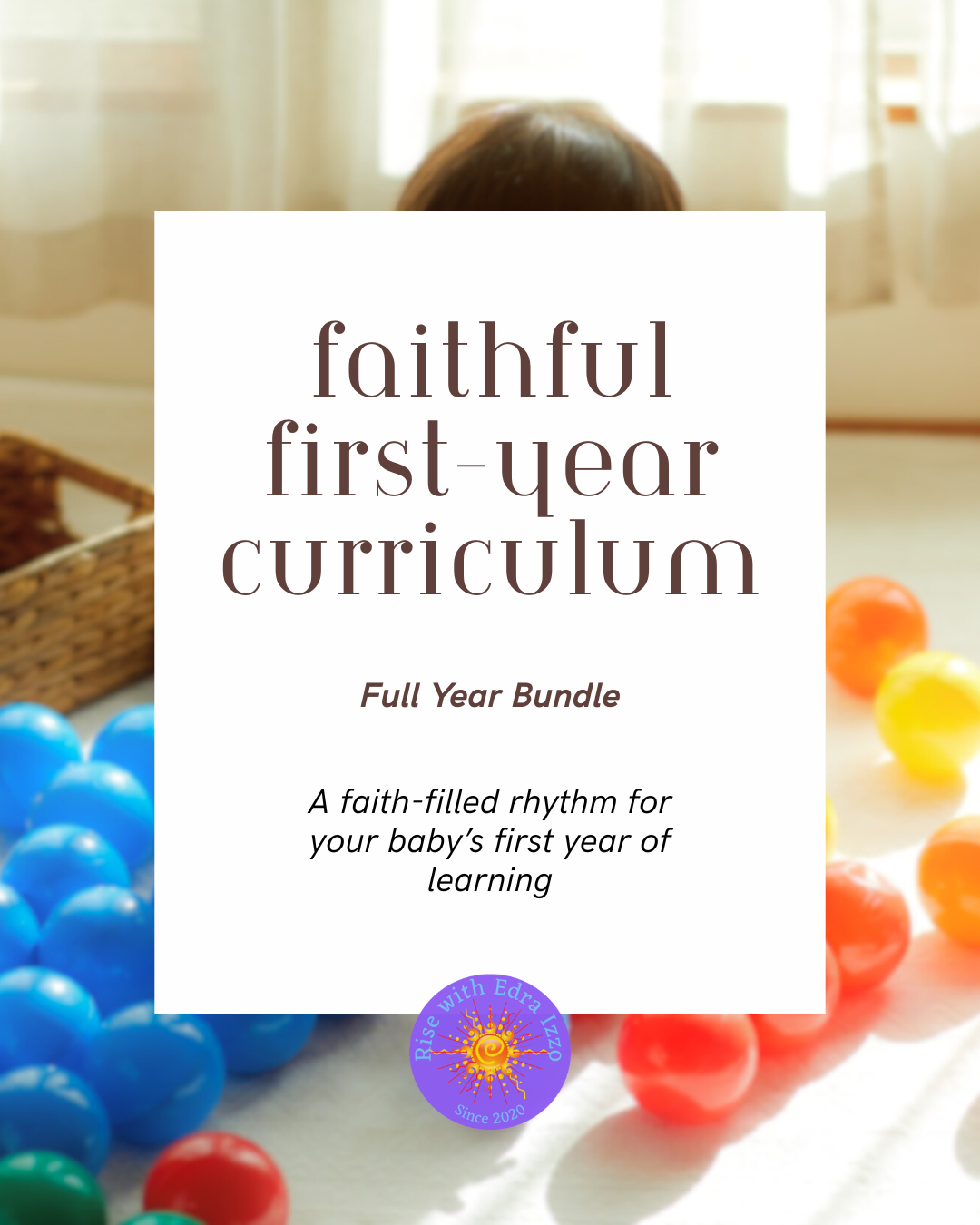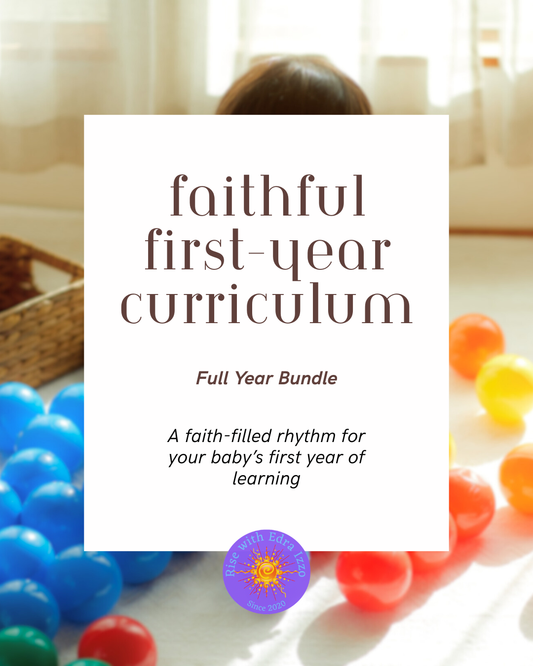
The Research Behind the Faithful First-Year Curriculum
Share
When I created the Faithful First-Year Curriculum, I wanted something more than busywork for babies. I wanted a rhythm parents could trust — something that honored how God designed our children to grow, while being rooted in real developmental science.
Below is the heart — and the research — behind it all.
Why We Begin So Early
The first three years of life are the most rapid period of brain development a human ever experiences. The Harvard Center on the Developing Child explains that early experiences literally build the brain’s architecture.
Every song you sing, every color you point out, and every prayer you whisper becomes part of that foundation. These little, consistent moments strengthen memory, language, and emotional security — and faith gives those experiences meaning.
Long-term studies like the Carolina Abecedarian Project found that children who received play-based, responsive care from infancy went on to have stronger academic and life outcomes. It’s proof that nurture and presence matter more than perfection.
What Research Says About How Babies Learn
1. Play is the work of childhood.
Research from the National Association for the Education of Young Children shows that playful learning builds language, confidence, and problem-solving skills. That’s why this curriculum follows a rhythm — See It, Play With It, Taste It, Create It — instead of rigid lessons.
2. Multi-sensory experiences strengthen learning.
When babies see, touch, and taste something (like a bright orange pumpkin), their brains connect multiple senses at once. This creates stronger pathways for understanding.
3. Repetition builds mastery.
Infants love repetition. Familiar songs, stories, and prayers create comfort and recognition. That’s why each month includes an Anchor Song, Anchor Book, and short Faith Prayer you can repeat daily.
4. Language grows through real conversation.
When you name what your child sees — “That’s a pumpkin!” — and pause for their response, you’re doing what researchers call serve and return. These back-and-forth moments are among the strongest predictors of language growth.
5. Movement fuels learning.
Gross motor play (rolling pumpkins, chasing orange toys, dancing with scarves) helps babies build balance, coordination, and attention. Movement and thinking develop together — not separately.
Where Faith and Science Meet
Science describes how learning happens. Faith reminds us why it matters.
When we add gratitude — “Thank You, God, for the colors You made” — we’re shaping both language and love. These short, sacred pauses teach our children that every discovery is a gift worth noticing.
Faith isn’t a separate subject here. It’s the heartbeat under everything.
Why October’s Theme Works
This month’s theme — Orange + Pumpkins & Fall — is anchored in Ecclesiastes 3:1: “For everything there is a season.”
The activities use what’s already around you — pumpkins, leaves, orange foods, and warm light — to help your baby explore through all their senses. It’s not about doing every activity; it’s about seeing together, playing together, and thanking God together.
That’s the kind of learning that lasts.
Grace Over Guilt
You don’t need to do it all. You just need to show up.
Every “thank you,” every shared laugh, every moment of noticing counts.
Faithful learning is built in the small things — and your love is the curriculum’s greatest teacher.
Research & References
-
Harvard Center on the Developing Child — Brain Architecture Basics
-
National Association for the Education of Young Children — The Power of Playful Learning
-
Carolina Abecedarian Project — Early Childhood Enrichment Study
-
American Academy of Pediatrics — Caring for Your Baby and Young Child
-
University of Washington — Serve and Return Interaction Research

